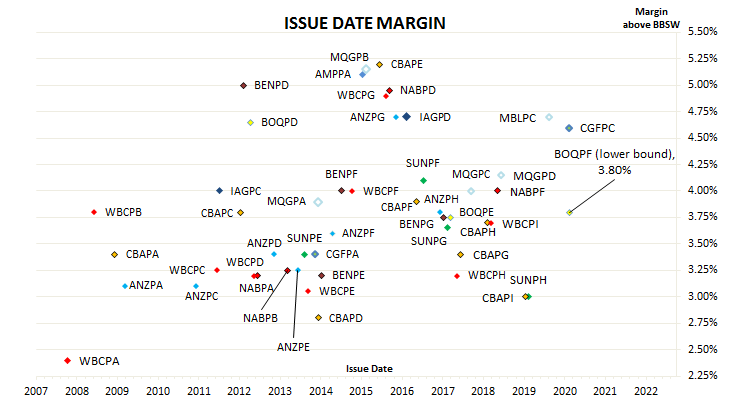Summary: BoQ to issue hybrid security as per APRA agreement; first call date in 2027; new notes initially to pay around 3.90% (annualised, including franking credits).
In recent years, when an existing Australian hybrid approaches its first call date, or its first optional exchange date, speculation turns to the likelihood of a replacement security. Bank of Queensland’s (BoQ) unlisted wholesale capital notes were redeemed with APRA approval in late-May on the provision it would issue replacement securities which qualify as Additional Tier 1 capital “at the first available opportunity.”
As a result, BoQ now plans to raise $200 million via an issue of Capital Notes 2 (ASX code: BOQPF) securities, with the ability to raise more or less than this amount. The new securities will be perpetual, convertible, subordinated, unsecured, redeemable notes and the proceeds will be used for BOQ’s general corporate and funding purposes.
The new notes have some features in common with both equities and debt securities. Distributions are at the discretion of directors but they are calculated according to a set formula with reference to the $100 face value of the securities. The notes will qualify as Additional Tier 1 (AT1) capital under the Basel III bank regulatory framework, which means they have the now-standard “event” clauses which may lead to early conversion into ordinary shares or a write-off of the capital notes should APRA require it. In the event BoQ were wound up (and APRA had not already forced a write-off), its hybrids would rank above ordinary shares but below ordinary debt securities and other liabilities.
The new capital notes have an indicative distribution rate equivalent to 3 month BBSW plus a margin in a range of 380bps to 400bps. The final margin will be determined by a “book build” which will be announced on 2 November 2020. A book build is a tender process managed by investment banks on behalf of the issuer in which investment institutions each place bids for a set volume at a price/yield. (This is the same way as the AOFM holds tenders to sell government bonds each week). If history is any guide, then the margin is likely to be set at the lower end.
“A nine year conversion date is too long even if the call date is in 2027…I’d be excited by five and seven but not by seven and nine,” according to one stockbroking source.

The chart above shows the history of issue margins of hybrid securities over the last decade or so, including the GFC period in 2008/2009. The new capital notes are shown at the lower end of the indicative margin (380bps).

